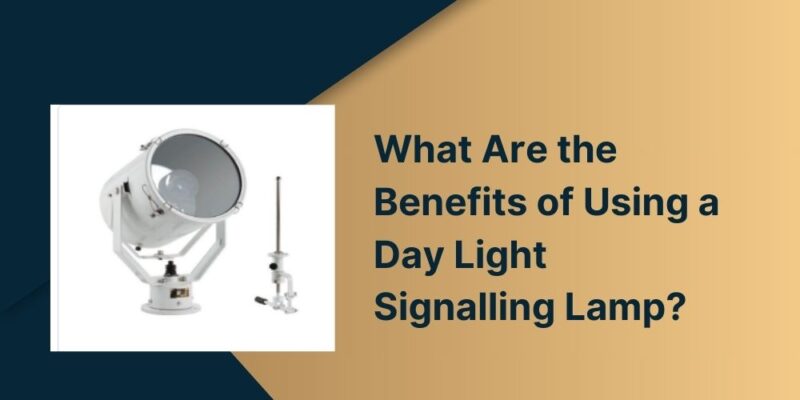
As the world continues to prioritize road safety and vehicle innovation, day light signalling lamps (DLSL) have emerged as an essential technology for improving visibility and reducing accidents. These specialized lights are designed to enhance vehicle visibility during daylight hours, helping prevent collisions and making roads safer for everyone. In this blog, we will explore the various benefits of using day light signalling lamps and why they are becoming a crucial component in modern vehicle safety.
Understanding Day Light Signalling Lamps
What is a Day Light Signalling Lamp?
A day light signalling lamp is a type of vehicle light that is specifically designed to increase the visibility of a vehicle during the day. Unlike standard headlights, which are primarily used in low-light conditions like at night or during poor weather, daylight signalling lamps are intended to be used in bright daylight. They make vehicles more noticeable to other drivers, pedestrians, and cyclists, reducing the risk of accidents caused by poor visibility.
How Do Day Light Signalling Lamps Work?
Day light signalling lamps typically use LED technology to produce a bright, efficient light that is visible even under direct sunlight. These lights are often mounted at the front of the vehicle and automatically activate when the engine starts. Their primary function is to make the vehicle more visible in daylight conditions, improving overall road safety.
Key Benefits of Using Day Light Signalling Lamps
1. Enhanced Vehicle Visibility
Increased Safety in Daylight Conditions
One of the most significant benefits of day light signalling lamps is the increased visibility they provide. Even in bright daylight, vehicles equipped with DLSLs are much easier to spot by other road users, which helps reduce the likelihood of collisions.
- Visibility in Adverse Conditions: Day light signalling lamps are particularly useful in conditions where visibility might be compromised, such as during fog, rain, or bright sunlight. They make vehicles stand out, ensuring that other drivers can see them from a distance.
- Safety for Motorcycles and Smaller Vehicles: Motorcycles and smaller vehicles, which are often less visible to other drivers, benefit greatly from DLSLs. The bright lights help make these smaller vehicles more noticeable, reducing the risk of accidents caused by other drivers failing to see them.
2. Reduced Risk of Daytime Accidents
Prevention of Head-On Collisions
Statistics have shown that many daytime accidents occur due to drivers not seeing oncoming vehicles in time. Day light signalling lamps make vehicles more visible from a distance, giving other drivers more time to react, especially on highways or during overtaking.
- Improved Reaction Times: By making vehicles easier to spot during the day, DLSLs give other drivers more time to react, reducing the risk of accidents. Whether it’s a driver pulling out of a side road or a vehicle approaching an intersection, the increased visibility ensures safer driving.
- Lower Accident Rates at Intersections: Intersections are often high-risk areas for accidents, particularly during busy daytime hours. DLSLs help to prevent these incidents by ensuring that vehicles approaching intersections are clearly visible to other drivers.
3. Energy Efficiency and Long Lifespan
LED Technology
Most day light signalling lamps use LED lights, which are known for their energy efficiency and long lifespan. This makes them a sustainable and cost-effective option for improving road safety.
- Low Power Consumption: Unlike traditional headlights, which can drain a vehicle’s battery if left on for extended periods, LED-powered DLSLs consume very little power. This makes them an energy-efficient option for all types of vehicles, from motorcycles to large trucks.
- Long-Lasting Durability: LED lights are incredibly durable and long-lasting. Once installed, they typically require little to no maintenance, reducing the overall cost of ownership for vehicle owners.
4. Compliance with Road Safety Regulations
Meeting Legal Requirements
In many countries, the use of day light signalling lamps is either recommended or required by law. Many regions have recognized the importance of improving vehicle visibility during the day and have introduced regulations that mandate the use of DLSLs for new vehicles.
- Legal Compliance: Using DLSLs helps drivers comply with local road safety laws and regulations. In countries where DLSLs are mandatory, failing to use them can result in fines or penalties. By ensuring that vehicles are equipped with these lamps, drivers can avoid legal issues while contributing to safer roads.
- Support for Future Regulations: As road safety regulations evolve, it’s likely that more countries will adopt mandatory DLSL requirements. By using these lamps now, vehicle owners are staying ahead of future legal requirements, ensuring that their vehicles remain compliant with safety standards.
5. Support for Vulnerable Road Users
Day light signalling lamp
Improving Safety for Pedestrians and Cyclists
Day light signalling lamps are not just beneficial for drivers. They also play a crucial role in improving safety for pedestrians and cyclists, who are particularly vulnerable to accidents on the road.
- Increased Visibility for Pedestrians: Pedestrians often struggle to see oncoming vehicles, especially when crossing roads during busy daylight hours. DLSLs make vehicles more visible, ensuring that pedestrians can spot them earlier and make safer decisions when crossing.
- Enhanced Safety for Cyclists: Cyclists are another group of road users who benefit from the increased visibility provided by DLSLs. In daylight, bicycles can be difficult to see, especially in urban areas. By making vehicles easier to spot, DLSLs help reduce the risk of accidents involving cyclists.
6. Easy Installation and Use
Simple Integration with Vehicle Systems
Day light signalling lamps are designed to be easily integrated into most vehicles. Whether installing them in a new car or retrofitting an older model, DLSLs are straightforward to install and operate.
- Automatic Activation: In most cases, DLSLs are designed to activate automatically when the vehicle is turned on, making them a hassle-free addition to any car. Drivers don’t need to manually switch them on or off, ensuring that they’re always in use when the vehicle is running.
- Low Maintenance: Since day light signalling lamps are typically LED-based, they require very little maintenance. Once installed, they continue to function reliably for years, without the need for frequent replacements or repairs.
Conclusion
Day light signalling lamps are a simple yet effective way to improve road safety during daylight hours. By enhancing vehicle visibility, reducing the risk of accidents, and providing energy-efficient lighting, DLSLs are becoming an essential feature in modern vehicles. They offer numerous benefits, not just for drivers but also for pedestrians, cyclists, and other road users. Whether required by law or used voluntarily to improve safety, DLSLs are a valuable investment for anyone looking to make the roads a safer place.
As more countries adopt regulations mandating the use of day light signalling lamps, and as the technology continues to advance, their role in preventing accidents and improving road safety will only grow. Whether you’re driving a motorcycle, a car, or a commercial vehicle, installing DLSLs can significantly contribute to a safer driving experience for everyone on the road.
Note:- To read more articles visit on emperiortech.











